Pumpkin season is in full swing, and these lightly spiced caramel pumpkin cookies are infused with luscious caramel flavor and frosted with a silky smooth caramel meringue buttercream—they’re just what you’ve been craving.
Texture is everything, and these pumpkin cookies are ultra-soft and oh-so-chewy, with a swoop of the creamiest, fluffiest buttercream you’ve ever had (it’s actually a hybrid meringue buttercream, making it less sweet and more buttery than its American counterpart).
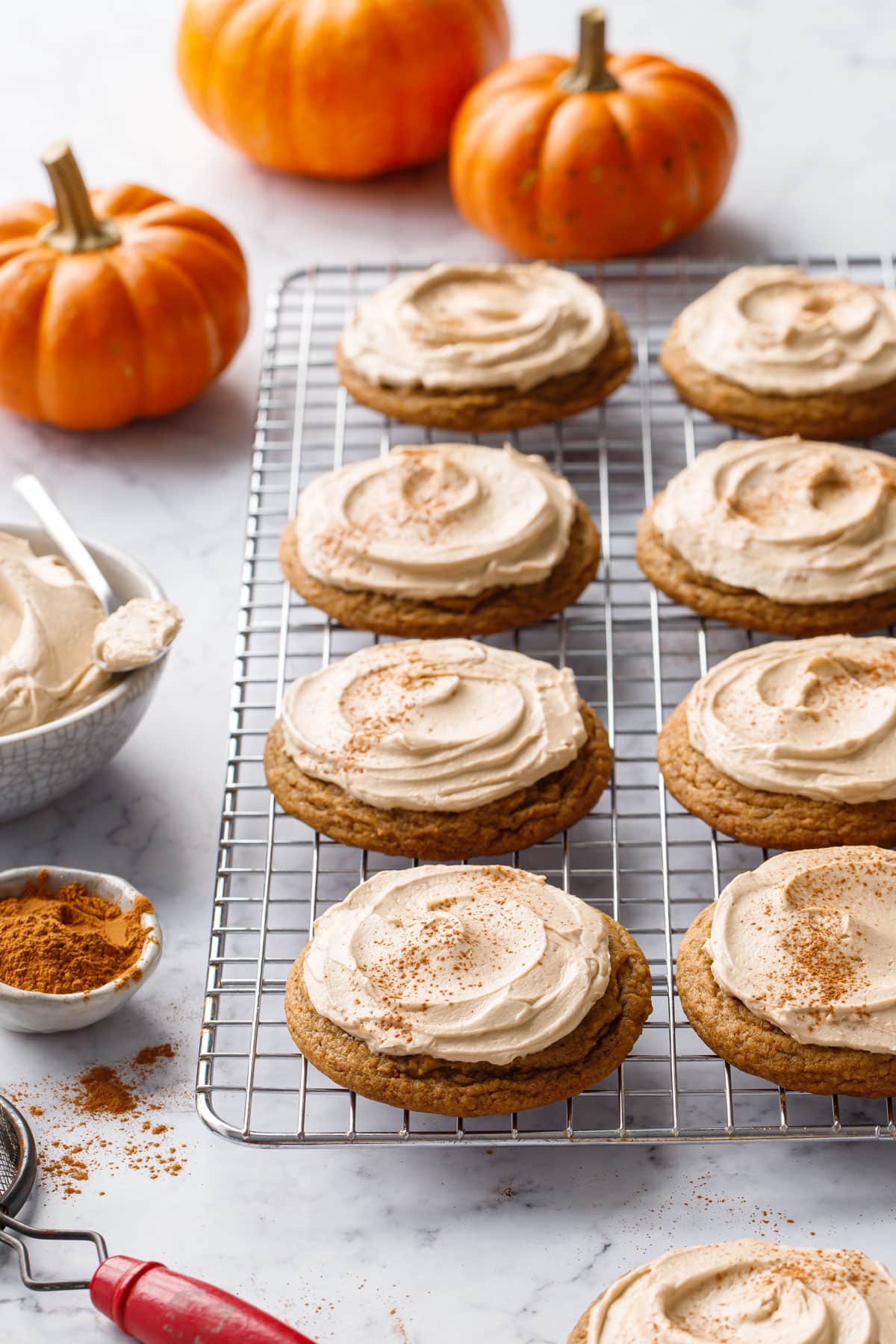
This recipe was created in partnership with Amoretti (use coupon code LOVEANDOLIVEOILFREESHIP for free shipping on your order!) All opinions expressed here are my own.
What’s not to love about these soft, frosted caramel pumpkin cookies?
The texture of the cookie is perfectly soft and chewy, not dry and cakey like pumpkin cookies tend to be.
But what really takes them to the next level is the salted caramel buttercream: it’s fluffy and buttery and caramel-y without being overly sweet, the perfect compliment to the lightly spiced pumpkin cookie.

Caramel and pumpkin are an under-rated combination, if you ask me. Particularly this time of year when it seems like everything has been pumpkin spiced to death, the addition of caramel is a unique and flavorful twist that makes these cookies stand out from the crowd.
And stand out they do.
I brought a batch of these cookies into ceramics class, not once, but twice as I was testing the recipe, where they were enthusiastically devoured. I always know when I’ve got a good one on my hands when the container empties within the first hour of class.
Sure plain pumpkin caramel cookies would be impressive and delicious on their own, but there’s something about that swirl of silky smooth frosting on top that takes things to a whole new level.
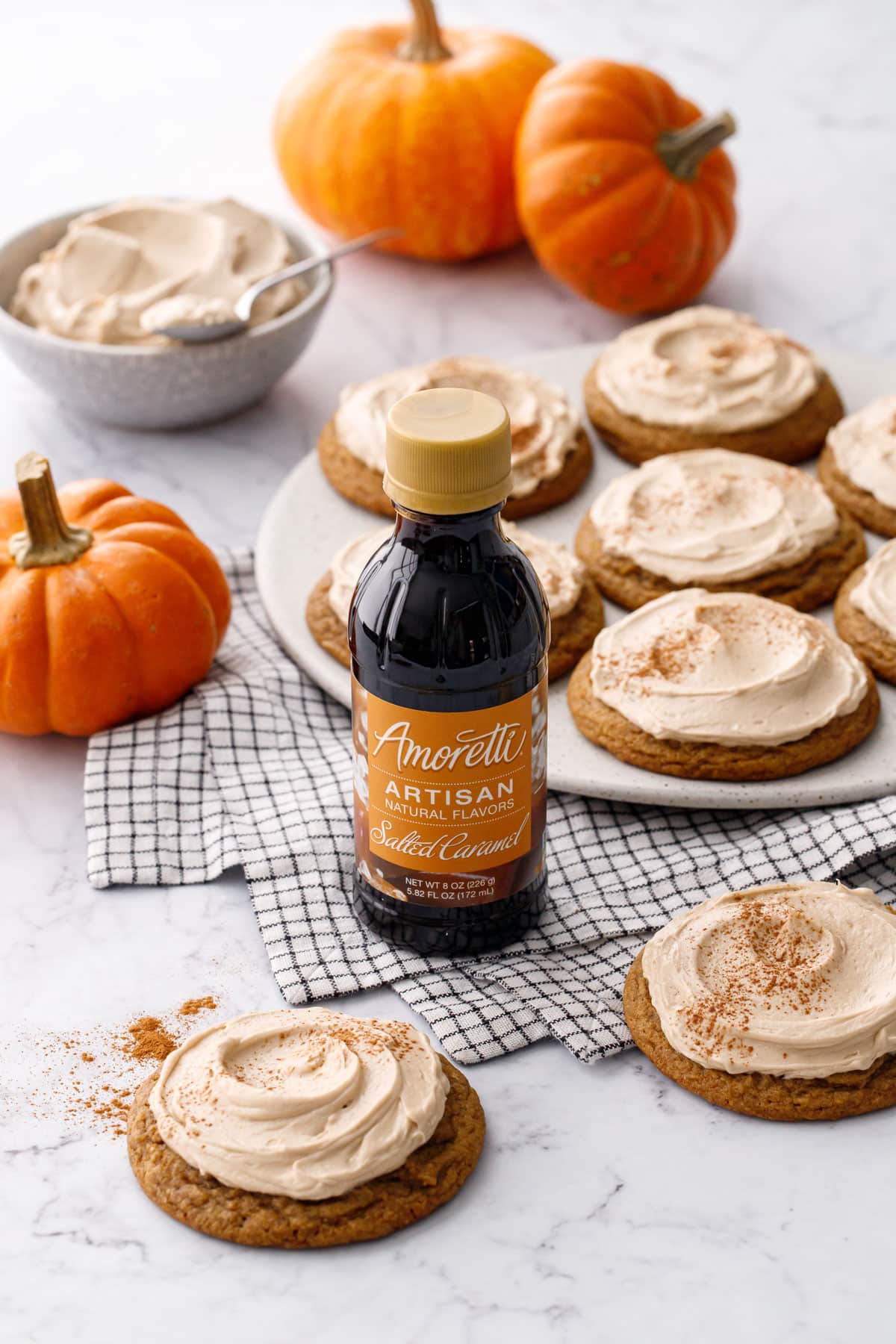
As lovely as caramel flavor is, it’s essentially just pure sugar—so flavoring an already sweet frosting with caramel makes it even more sweet. In recipes like my Caramel Cookie Crunch Ice Cream, for example, the caramel in the ice cream base tastes amazing, but makes for a suuuuuper sweet ice cream, despite there being no additional sugar in the ice cream base. Buttercream is the same way, it’s already bordering on cloying (American buttercream in particular), so adding straight caramel to it just exaggerates that excessive sweetness even more.
That’s where this Amoretti Natural Artisan Salted Caramel Flavor Paste comes in, adding luscious caramel flavor without the excess sweetness. If I’d known about it back when I wrote that ice cream recipe, I definitely would have used it there.
I knew I wanted to share a recipe that would showcase the unique characteristics of this product, namely the ability to add caramel flavor without excess sweetness, and decided that a caramel buttercream would be the perfect use for it.
But what should that caramel buttercream adorn? That is the real challenge. I didn’t really feel like making a cake (which tends to be a full weekend endeavor), and realized I barely have any frosted cookie recipes (I tend to stuff my cookies rather than frost them, lol). And because it’s fall, pumpkin seemed like an obvious choice, and pumpkin and caramel are a truly under-rated combination.
I ended up using the flavoring in both the cookies and the frosting, where it adds a lovely caramel flavor to perfectly compliment the pumpkin and spices without excess sweetness.
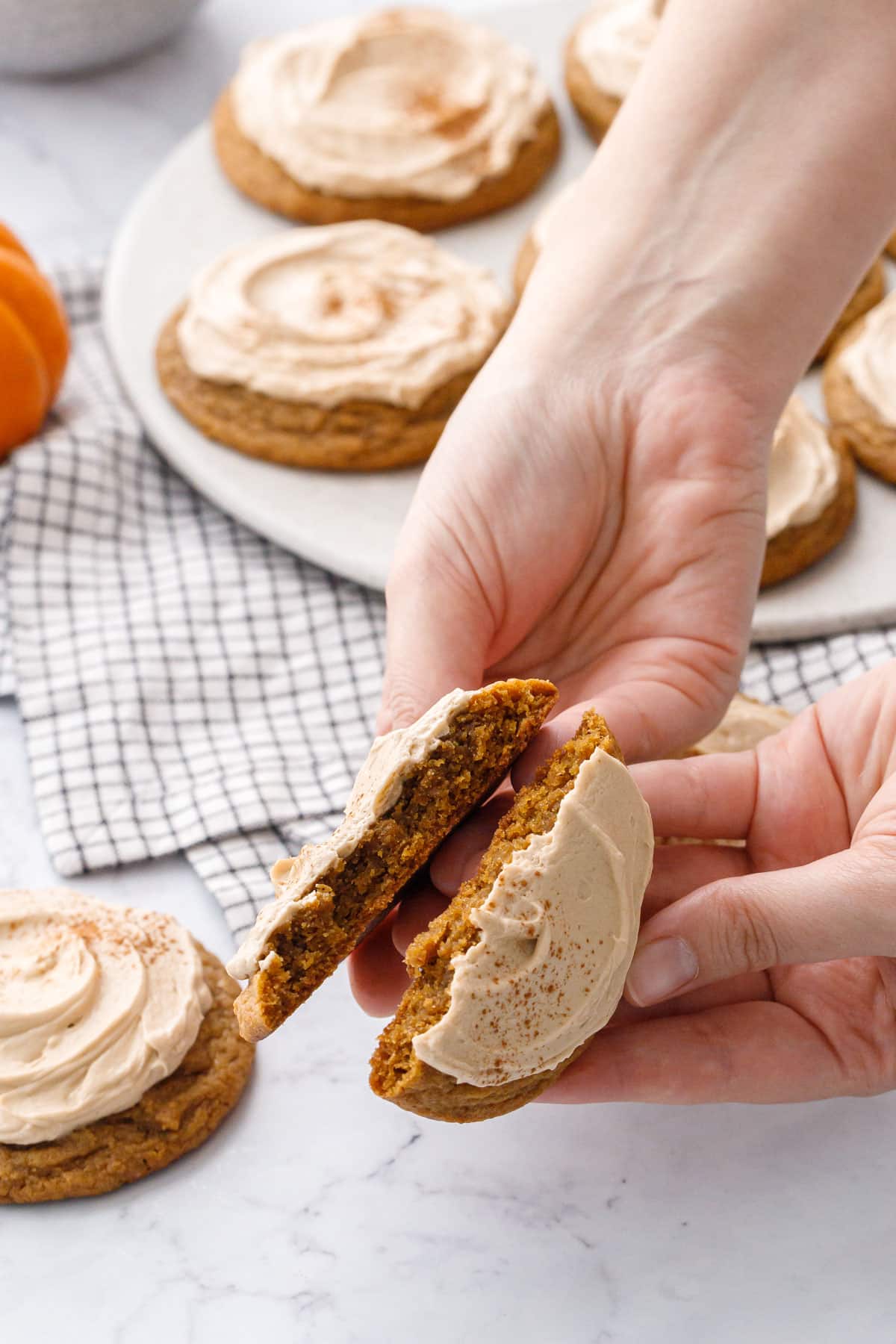
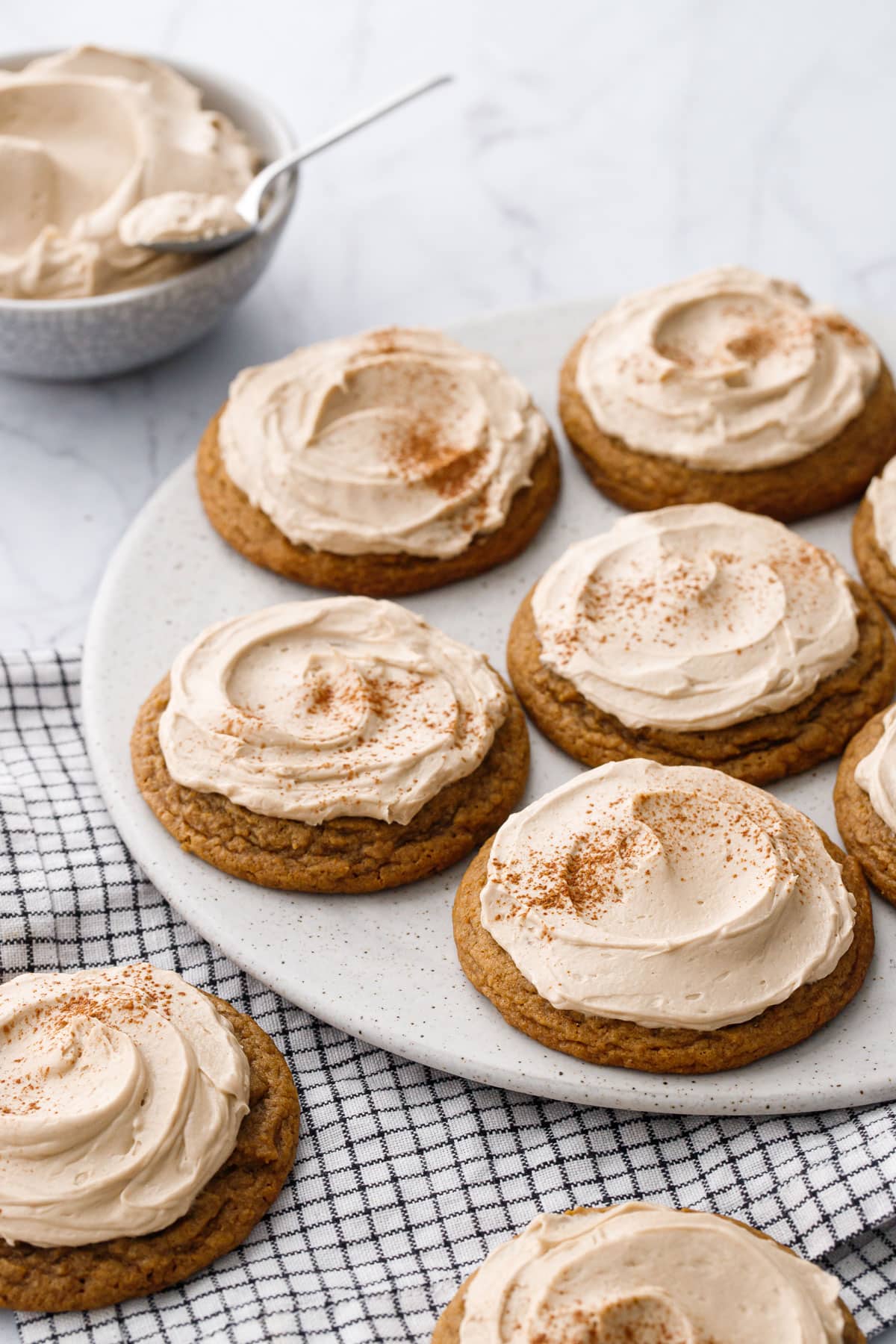
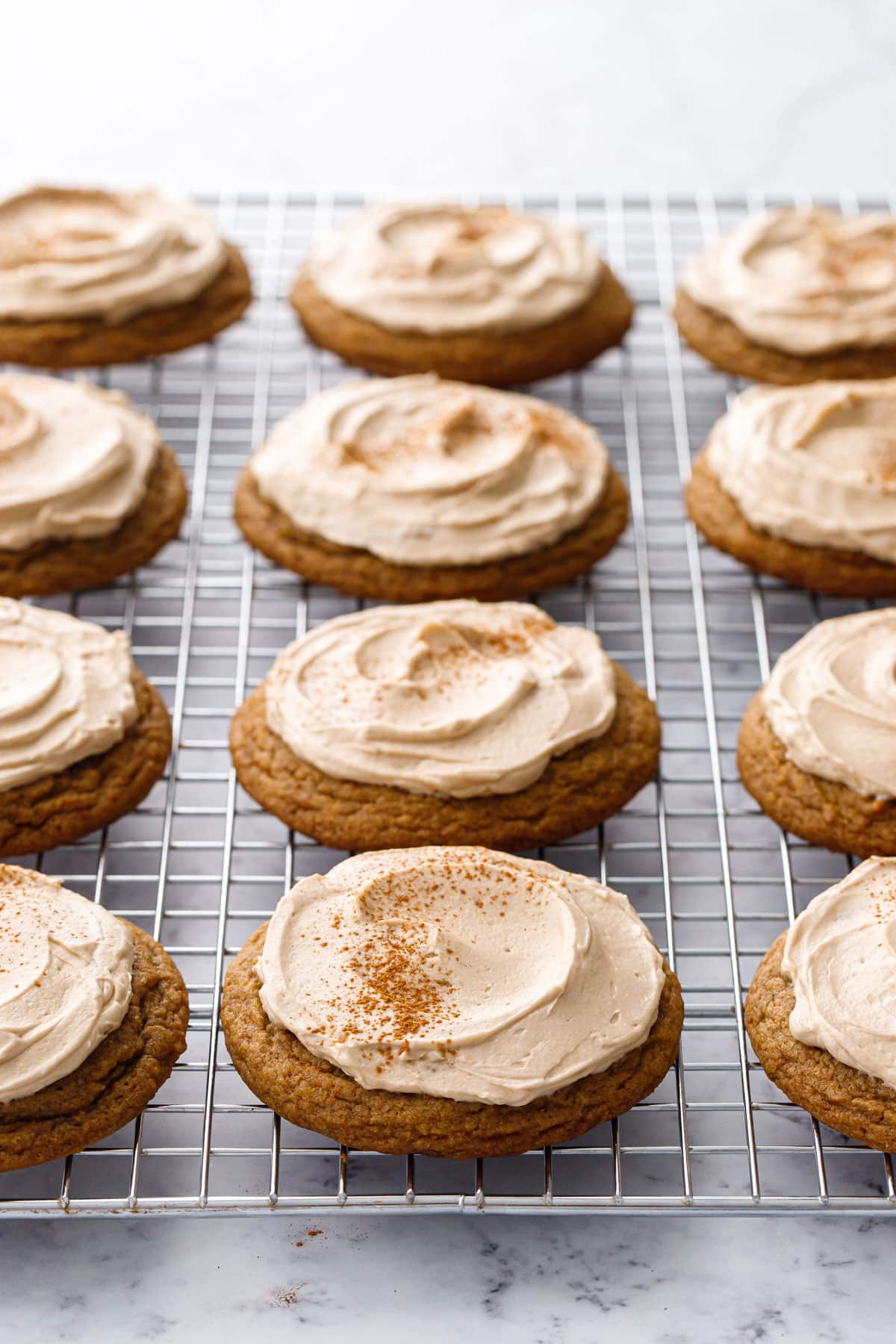
The Amoretti Natural Artisan Salted Caramel Flavor Paste is a very unique product, and isn’t something that can be easily replaced. Caramel extract is a thing (I think? I’ve never actually tried it) and would be the closest substitute, although extracts are likely more concentrated so you’d need to add a smaller amount (maybe start with 1/2 teaspoon and then add more to taste).
Using caramel sauce would be an option as a last resort, but you’re not going to get as prominent a caramel flavor as you do with the Amoretti flavoring. Adding more caramel to the cookies would most definitely affect the consistency and spread, and adding more caramel to the frosting would make it overly sweet and much looser in texture. So while yes, you could technically substitute caramel extract or caramel sauce here (with adjustments for flavor and consistency), I’d really recommend the Artisan flavoring as it’s going to give you a much better result in the end.
You can also leave out the caramel entirely and you’ll have yourself a plain, but stellar, spiced pumpkin cookie with creamy meringue buttercream which you can flavor however your heart desires, maybe sea salt and vanilla bean (might I suggest Amoretti’s Natural Artisan Vanilla Bean Flavor, which I featured in a delightful crumb bar recipe last month), maple syrup or honey, cream cheese, or even cranberry.
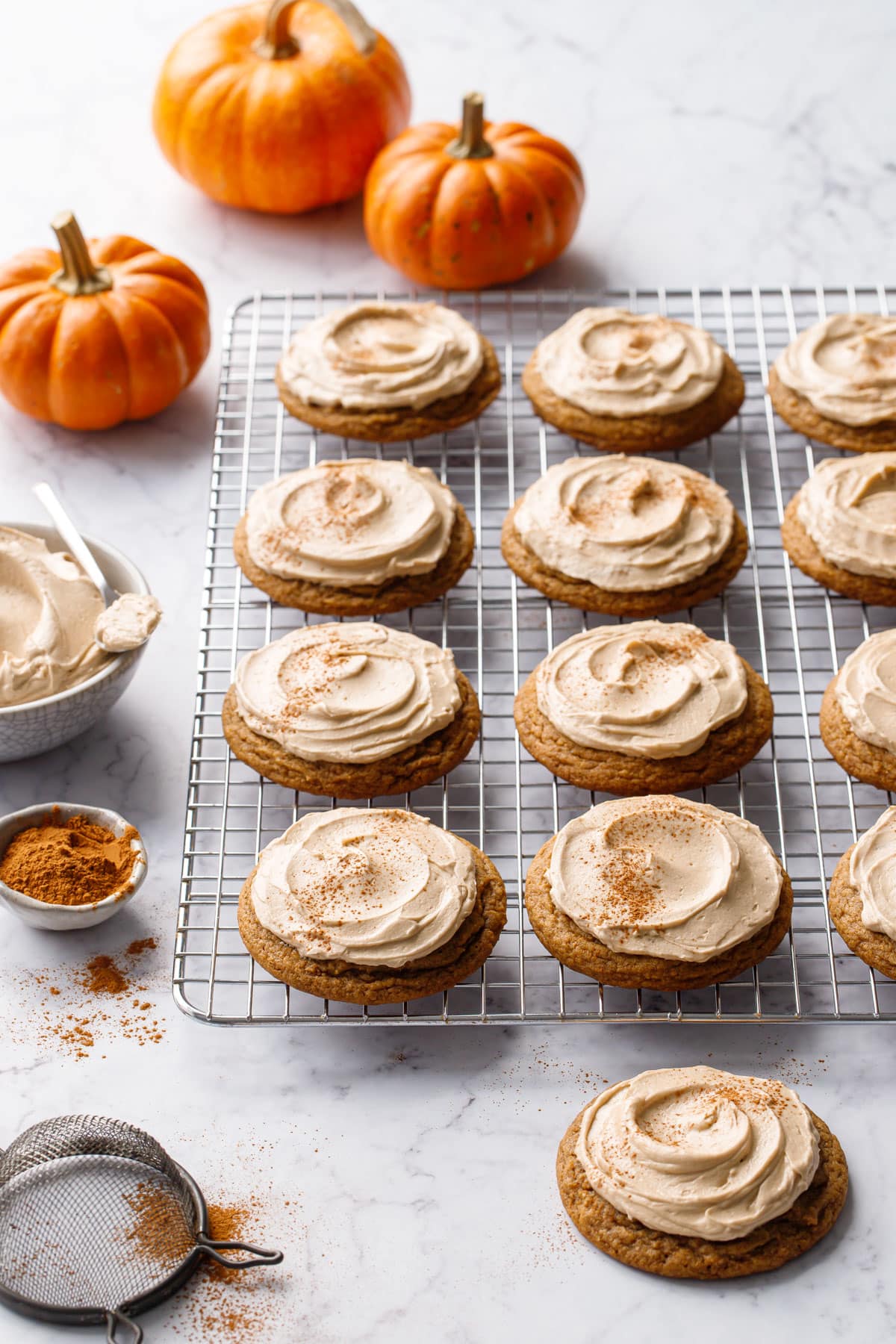
One of the trickiest parts about using canned or homemade pumpkin puree in cookie recipes is the consistency. It’s very water-heavy, and can make for overly cakey cookies as a result.
Personally I’m not a fan of cakey cookies, so I set out to find a way around that tendency.
In this recipe I call for draining the pumpkin. In the past I’ve placed the puree in a fine mesh sieve and let it sit overnight (which works too), but in this case I simply used paper towels to absorb the excess water. You’ll need a few changes of paper towels until it no longer soaks through with a bit of pressure.
Removing the excess water from the pumpkin puree will allow for a stronger pumpkin flavor and a chewier texture overall, which is something I really wanted to achieve in these cookies. Sure cakey cookies have their place, but that’s not what I was going for.


















These cookies are easy to whip up, with a melted butter-based dough that doesn’t even require a stand mixer, at least until it’s time to make the frosting (please don’t try to make meringue buttercream without an electric mixer or your arm might very well fall off).
I went big this time, and used a large cookie scoop to make generously sized cookies with firm, chewy edges and soft, tender centers. Look for a #20 cookie or ice cream scoop—the #20 means it makes 20 scoops per quart of ice cream, just in case you were curious where those scoop numbers come from. It’s a little over 3 tablespoons of dough (this scoop is also the perfect size for cupcakes). You’ll get about 18 cookies out of a single batch with this size scoop.
Compared to, say, a #60 scoop, which I use for smaller cookies and also to dollop a nice even 1 tablespoon worth of frosting on top of the larger cookies). I also have a #40 which I use for more average sized cookies.
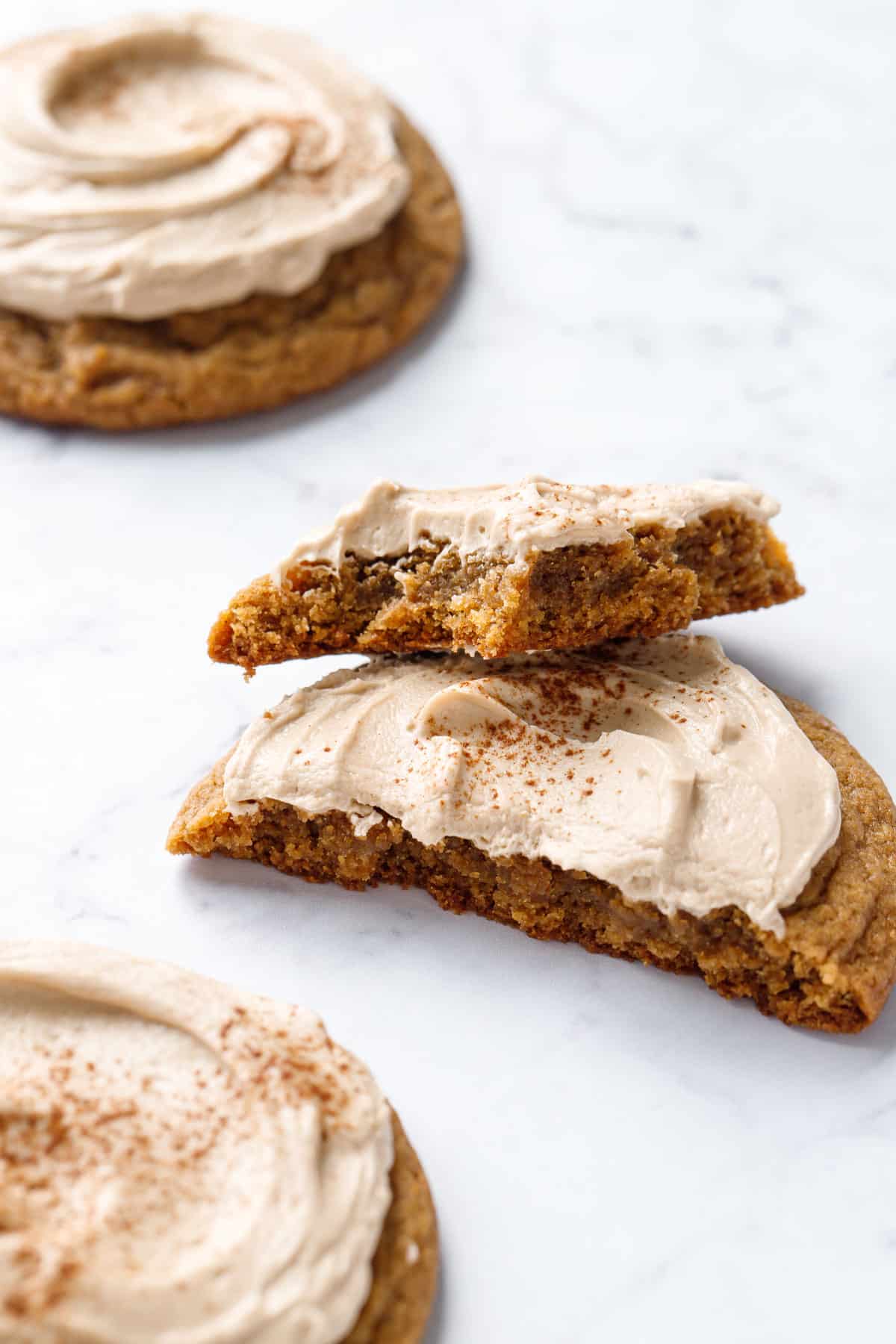
To Chill or Not To Chill
That is the question with many cookie recipes, some calling for little to no chill, others calling for up to 24 or even 48 hours (!!).
In this recipe I call for a very brief 10 to 15 minute chill time, just to firm up the dough ever so slightly and make it easier to scoop and handle.
But technically, you don’t need to chill it at all, as this recipe can be baked directly from room temperature dough with excellent results (how’s that for near-instant gratification?)
I tested longer chill times, and didn’t like the appearance of the cookies when the dough chilled longer than 15 minutes, but if you find your cookies are spreading out too much, or if you like puffier, more dome-like cookies, feel free to chill it longer as needed.
If your cookies spread too much or if they spread unevenly, just swirl a round cookie cutter around the edges of the cookie as soon as they come out of the oven. This is my favorite ‘trick’ for producing perfectly round cookies every time.
For this reason I usually bake off a test pan of 2 or 3 cookies first, to see how they turn out, and then I can decide if I want to chill the rest of the dough or not.
Meringue-ing Endorsement
The frosting is actually a hybrid meringue, with a Swiss meringue base and a bit of powdered sugar added in at the end, which I find helps cut the strong butter flavor without being tooth-breakingly sweet like pure American buttercream can be. Sure it’s a little bit more work to make the meringue part (patience is your friend here as is a digital thermometer), but the final result is well worth it.
I actually tested this recipe with a traditional American buttercream at first because, who has time for meringue? But the fact that the cookies themselves call for 2 egg yolks, it made perfect sense to me to use the two egg whites in the frosting. So I tested it again and the hybrid meringue frosting was the clear winner, and well worth the little bit of extra effort.
Would these cookies be delightful without the frosting? Sure. You could also use an American buttercream or cream cheese frosting (I’m not a fan, but you do you) if you prefer. As for the extra egg whites in that case, you can always whip up a batch of soft amaretti cookies, shake them into a frothy cocktail, or freeze them for another use.












There are a few different kinds of meringue buttercream, this one being most similar to a Swiss meringue buttercream, where the egg whites are cooked with the sugar over a double boiler to a temperature of about 160 degrees F. That’s compared to an Italian meringue where the sugar syrup is cooked to a much higher temperature of about 240 degrees F, then drizzled into the raw whipped egg whites, the same as Italian style macarons essentially. (There’s also a third, French meringue style, which uses egg yolks instead of whites, but that’s another recipe for another day).
Some may cry foul over the fact I added powdered sugar to my meringue buttercream, but again, this is more of a hybrid Swiss-American buttercream. I find that just a little bit of powdered sugar (but still much less than you’d use in a typical American buttercream), helps balance the butteriness and gives it a fluffier, less greasy texture.
When making meringue frostings, temperature is paramount: ideally your meringue should be the same temperature as your butter, about 70-75 degrees (don’t be afraid to stick a thermometer into the stick of butter if you have to!)
Broken meringue buttercreams most often occur when the temperatures of the meringue and the butter don’t match, so if your meringue hasn’t fully cooled and is still warm to the touch, or if your butter is too cold.
If you notice your meringue starting to break and separate as you add the butter, stop adding butter, increase the mixer speed to high and just let it rip for 10 or even 15 minutes; it should come together once the temperatures have equalized a bit. Then you can continue adding the butter, one pat at a time.
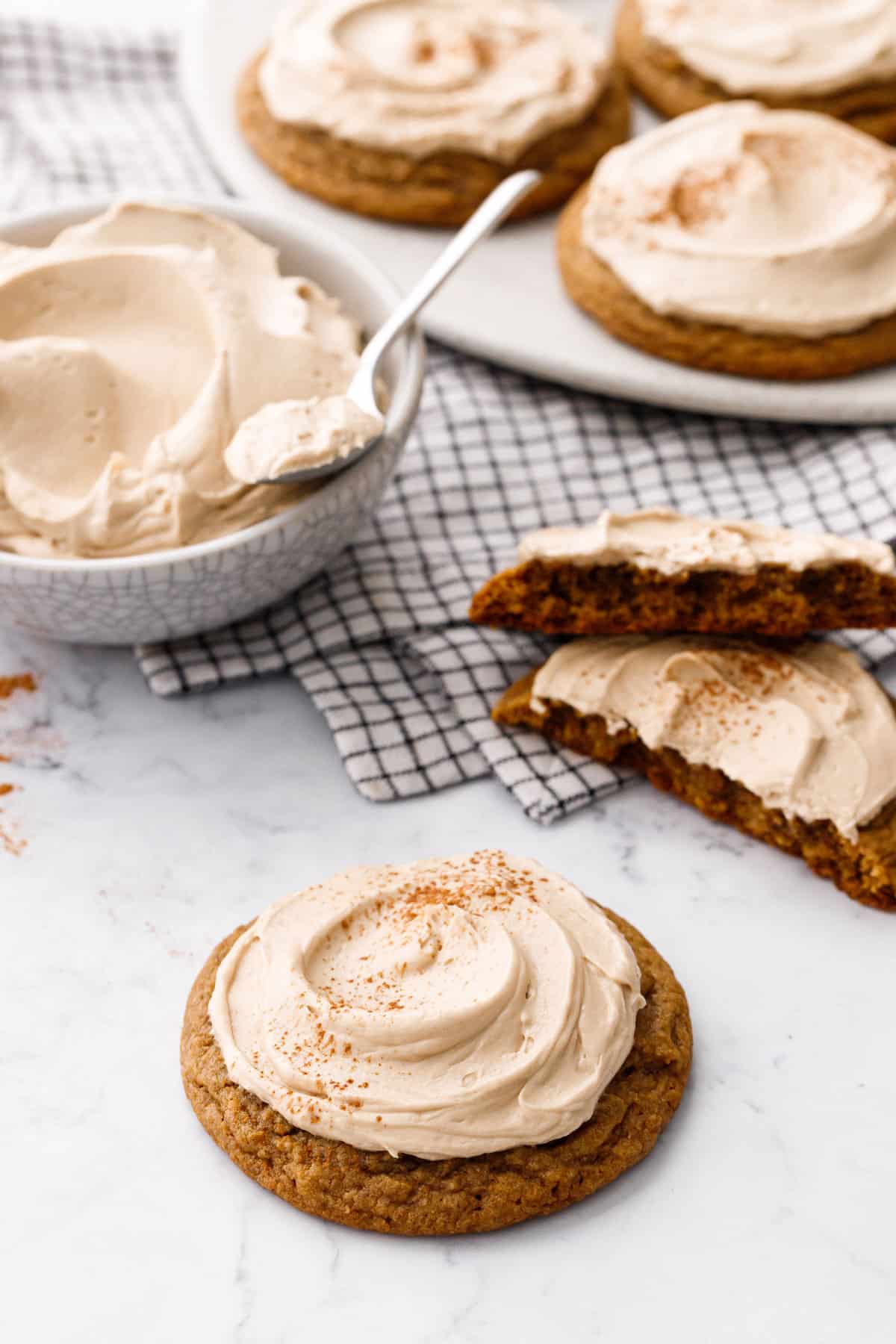
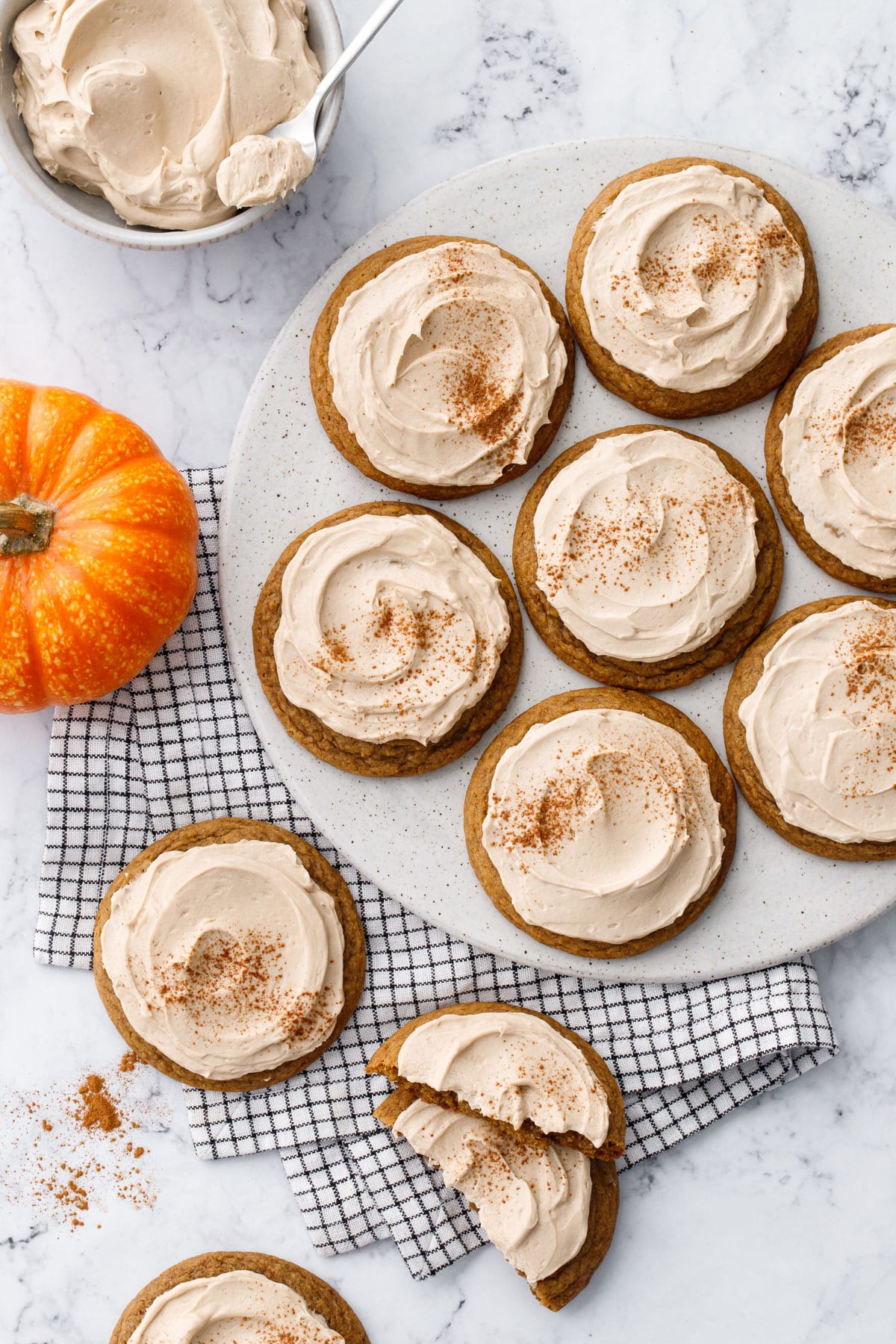

Freeze!
If you want to freeze the unbaked balls of dough for baking later, scoop them out onto a parchment-lined baking sheet, then freeze in a single layer. Once they are fully frozen you can transfer them to a zip top bag.
When baking from frozen, the cookies will look slightly different than what’s pictured. You can bake frozen balls of dough directly from the freezer, though I recommend reducing the oven temperature to 325 degrees F and increasing the bake time accordingly; this will help them bake more evenly.
You can also freeze the baked, but unfrosted cookies; just pop them in a ziptop bag right in the freezer. I don’t love freezing buttercream so I wouldn’t freeze them with the frosting (as it can sometimes get a bit sweaty when it thaws).

Swaps & Substitutions
Dark Brown Sugar: Used for a richer, more robust molassesy flavor. You can use light brown sugar instead if you like, the color and flavor will just be slightly lighter.
Amoretti Natural Salted Caramel Artisan Flavor Paste: This is a very unique product and this recipe was written specifically for it. You can substitute caramel extract if you have it, just use much less than called for in the recipe (start with 1/2 teaspoon and add more to taste).
Use coupon code LOVEANDOLIVEOILFREESHIP at Amoretti.com for free shipping on your order!
Using caramel sauce in the same quantities will give you some caramel flavor, but it won’t be nearly as pronounced. You can increase the quantity of caramel in the frosting to taste (add a little bit at a time so the frosting doesn’t get too loose), but I don’t recommend using more than a tablespoon in the cookies themselves as that much extra liquid sugar will adversely affect the quality of the bake.
Pumpkin Puree: Use canned or homemade pumpkin puree (the latter will have a more subtle flavor). Butternut squash or sweet potato puree would work here too, just don’t skip the paper towel step or the cookies will come out cakey rather than chewy.
Pumpkin Spice: I used a pre-mixed pumpkin spice blend, and spiced the cookies on the lighter side since I wanted the pumpkin and the caramel flavors to be the stars, but you can use more if you like. Feel free to use a homemade pumpkin spice mix or a mix of cinnamon, ginger, nutmeg and cloves, and maybe some cardamom.
Vegetable Shortening: I find replacing a few tablespoons of butter in the frosting with unflavored vegetable shortening helps cut the flavor of the butter and produces a more stable frosting. That said, you can use all butter if you prefer.
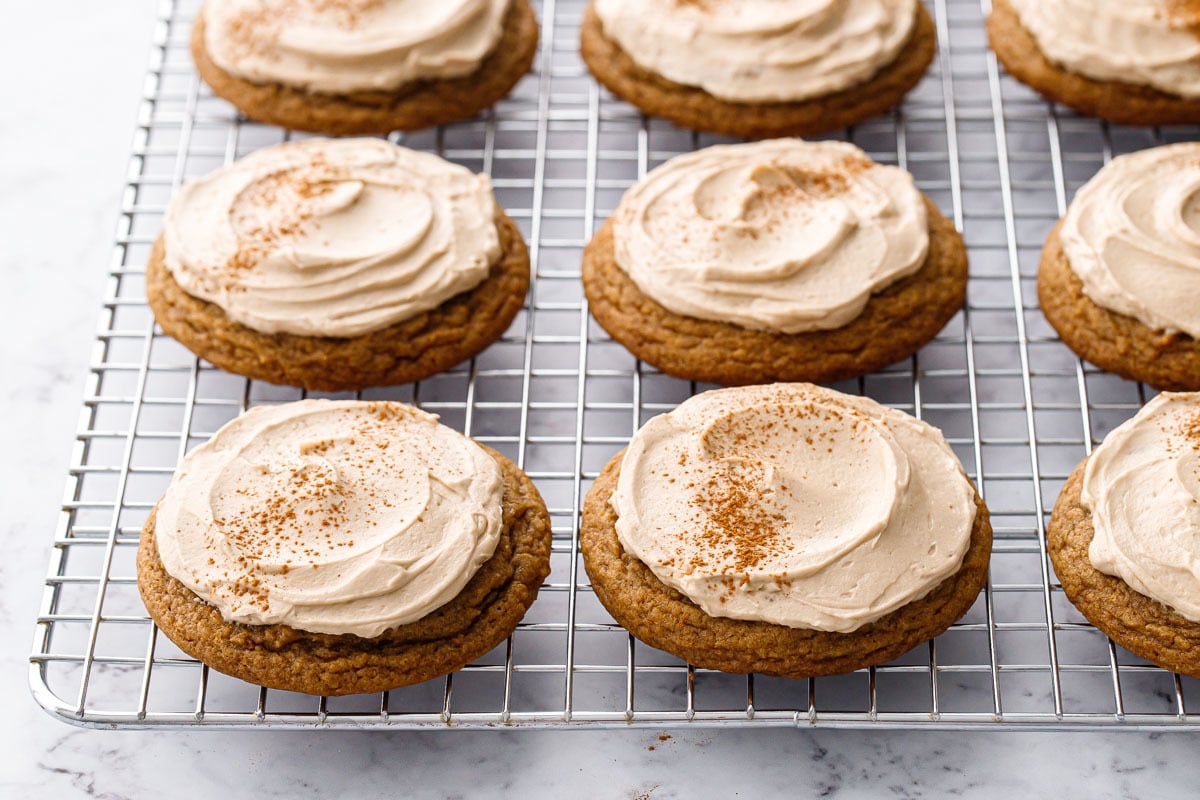
Caramel Pumpkin Cookies with Salted Caramel Buttercream
Ingredients
For Pumpkin Cookies:
- 2 ⅔ cups / 156 g all-purpose flour
- 1 ½ teaspoons pumpkin spice
- 1 teaspoon baking soda
- ½ teaspoon baking powder
- ½ teaspoon fine sea salt
- ⅔ cup pumpkin puree
- 2 egg yolks
- 1 cup / 113 g (2 sticks) unsalted butter, melted
- 1 ½ cups / 160 g packed dark brown sugar
- 1 tablespoon Amoretti Natural Salted Caramel Artisan Flavor Paste
For Caramel Frosting:
- 2 egg whites
- ½ cup granulated sugar
- 12 tablespoons (¾ stick) unsalted butter, at room temperature, cut into 1 tablespoon pieces
- 2 tablespoons unflavored vegetable shortening*, at room temperature
- 1 cup powdered sugar, sifted
- pinch fine sea salt
- 1 ½ tablespoons Amoretti Natural Salted Caramel Artisan Flavor Paste
Instructions
- Preheat oven to 350 degrees F. Line a baking sheet with parchment paper.
- In a bowl, whisk together flour, pumpkin spice, baking soda, baking powder, and salt; set aside.
- Spread pumpkin puree onto a plate. Press with paper towels to remove excess moisture. Peel off paper towels, then repeat with a fresh paper towel until it no longer soaks through.
- Scrape drained pumpkin into a small bowl, then whisk in egg yolks until smooth (save the egg whites, you'll need them for the frosting).
- In a medium bowl, combine lukewarm melted butter with brown sugar. Whisk vigorously until smooth and uniform, not broken-looking or greasy. You can use an electric mixer for this if you'd like.
- Whisk in pumpkin-egg yolk mixture, followed by Amoretti Natural Salted Caramel Artisan Flavor Paste until evenly incorporated.
- Add dry ingredients and mix until just incorporated and no streaks of dry flour remain. Chill for 10 to 15 minutes or until slightly firmer (you can bake it straight away if you like, though I find it a bit easier to manage with just a brief chill).
- Scoop dough into balls with a large cookie scoop (about 3 tablespoons worth, or 60g of dough per ball by weight), then arrange on prepared cookie sheet, leaving plenty of space between cookies as they will spread in the oven. I like to bake 6 at a time, but you could probably fit 8.
- Bake for 12 to 14 minutes (10 to 12 if baking un-chilled dough) or until tops are puffed and edges start to brown.
- Remove from oven and let cool on cookie sheet for 10 minutes, then transfer to a wire rack to cool completely while you prepare the frosting.
For Frosting:
- In a double boiler or a heat-proof bowl set over (but not touching) a saucepan of gently boiling water, combine egg whites and granulated sugar. Continue to whisk until egg whites are frothy and mixture is warm to the touch; if you rub a bit between your fingers you should not feel any grains of sugar.
- Transfer to the bowl of an electric stand mixer fitted with the whisk attachment. Turn to medium high and whip until mixture forms soft, glossy peaks, and is no longer warm to the touch (the meringue should read no more than 80 degrees F on an instant read thermometer).
- When meringue is no longer warm to the touch, add room temperature butter and shortening, 1 tablespoon at a time, beating until fully incorporated before adding the next chunk. Scrape down the sides of the bowl occasionally as needed.
- When all of butter is incorporated, switch over to the paddle attachment (this will help mix out some of the excess air). Add sifted powdered sugar and salt and mix until incorporated.
- Add Amoretti Natural Salted Caramel Artisan Flavor Paste, then increase mixer to high and beat for another minute or two or until light and fluffy.
- You can make the buttercream ahead of time; transfer to an airtight container and refrigerate for up to a week. Before using, bring to room temperature then mix with an electric mixer until fluffy again.
- Use a small cookie scoop or spoon to dollop about 1 tablespoon on top of each (fully cooled!) cookie, then spread out using the back of a spoon or offset spatula. Dust with cinnamon if desired.
- Cookies will keep, refrigerated in an airtight container, for up to 5 days.
Did you make this recipe?
Let us know what you think! Leave a Review below or share a photo and tag me on Instagram with the hashtag #loveandoliveoil.Disclosure: This post was created in partnership with Amoretti. As always, all opinions written are purely our own. We’re incredibly grateful for opportunities like these that allow us to continue sharing delicious recipes with you, so thank you for supporting us and the brands we love.
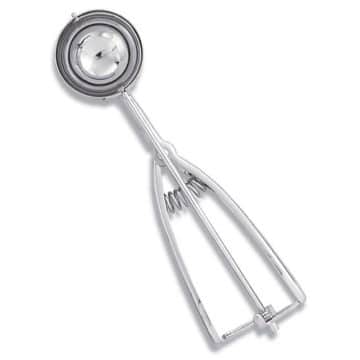
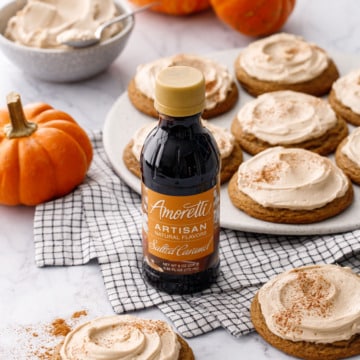
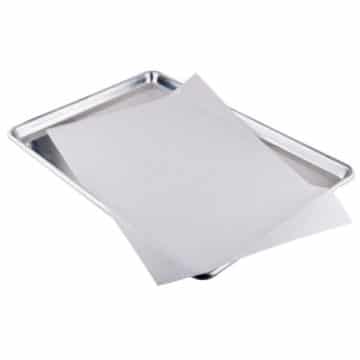
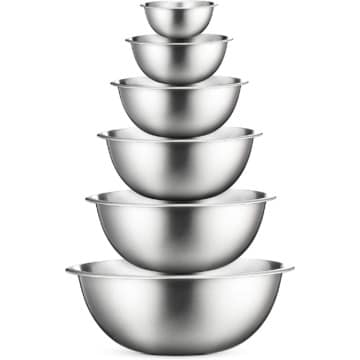
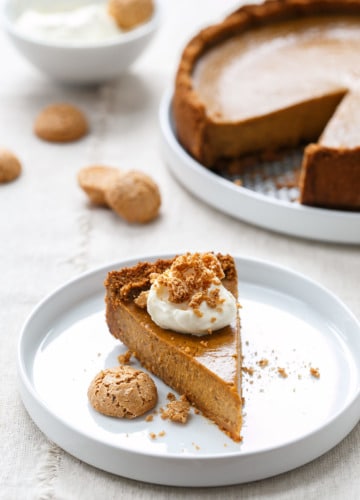
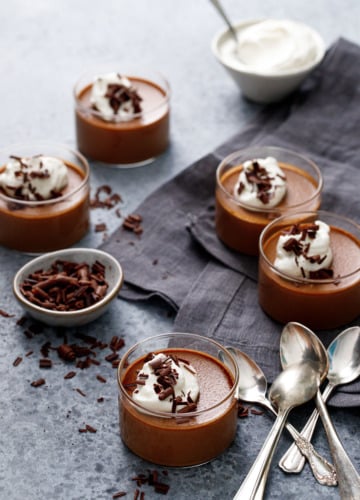
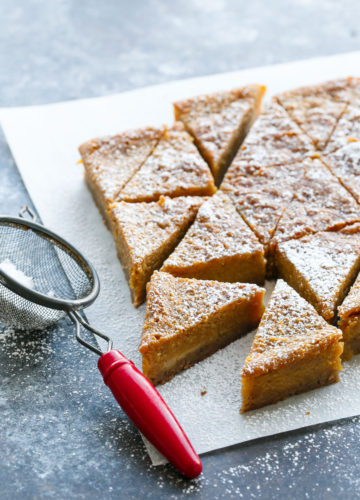
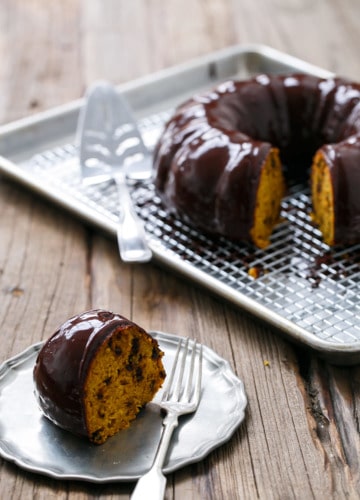
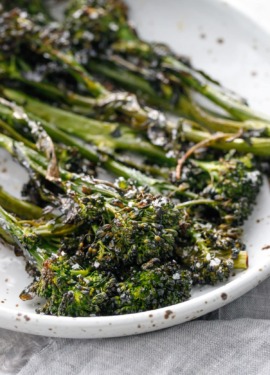
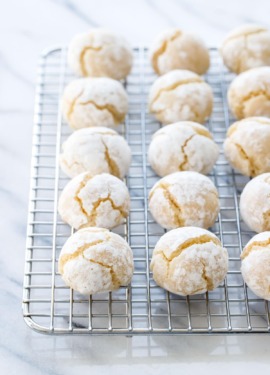
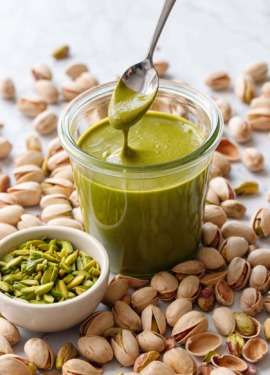
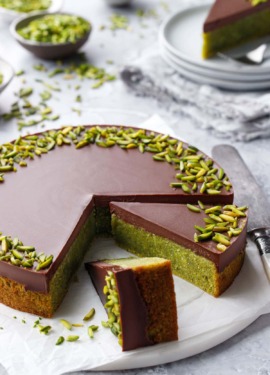
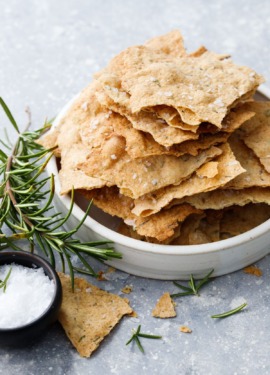
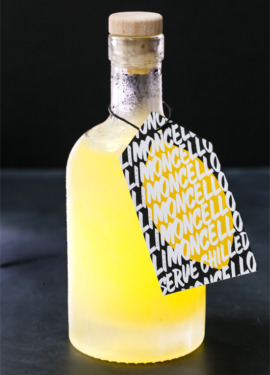
The link for the Caramel paste isn’t right. This one works :) https://amoretti.com/products/salted-caramel-artisan-flavor
Thanks for catching that the link has been updated now (it’s supposed to link to a landing page with all the products I’ve featured).